– By Shri. Ranajit Savarkar
Certain weeklies have recently published articles which demean Swatantryaveer Savarkar’s legacy. This is to set the record straight on the allegations by historian Niranjan Takle who has misused the tag of a ‘researcher’ to defame Veer Savarkar. The Week has chosen to republish the allegations made against Veer Savarkar by Noorani and Shamsul Islam as if some new, hitherto unknown, facts have come to light through ‘research’. These allegations have already been adequately rebutted in the past. This article is to rebut them yet again in the light of this renewed attack on Savarkar.
Veer Savarkar had demanded complete freedom to India from the British in 1905. Under the circumstances prevailing at that time, even the (Indian National) Congress did not dare to make such a demand until 1930. However, four allegations have been made against such an extraordinarily courageous person in the said article.
Allegation No. 1
After being sentenced to Andaman, Savarkar gave up and repeatedly wrote amnesty petitions to the British
Rebuttal:
1. Veer Savarkar’s purpose was to escape the clutches of the British and rebuild the struggle (for independence)
In his autobiography Veer Savarkar himself has openly shared the fact that he had petitioned the British for release (from Andaman jail) several times but had never apologised for his actions (against the British) in any of his petitions. Savarkar was a barrister and there was nothing wrong in making attempts for getting released using the provisions of the prevalent (British) law at that time. He held that it was the duty of every revolutionary to keep trying to escape from the British and rebuild the struggle. He used to repeatedly express this view to the other fellow revolutionaries in the jail. The evidence of this is found from the great revolutionary Sachchindranath Sanyal. He had been awarded life imprisonment in the Lahore conspiracy case. Like Savarkar, he also got himself released on the promise of good behaviour only to earn life imprisonment once again, this time as the mastermind of the Kakori case. Sachchndranath writes in his autobiography, “Savarkar had also promised cooperation (with the British government) like me. I was released but not Savarkar. Why? Because the government feared that if Savarkar was released there may be another round of revolutionary upsurge in Maharashtra” (Pg. 226, Bandijeevan).
2. The content of Veer Savarkar’s petitions was a part of his (long term) strategy (for struggle against the British rule) !
The Week has published the petition made by Veer Savarkar in November 1913. There is no mention of any regret or apology (for his actions against the British government) in that letter. He had a discussion with Sir Reginald Craddock before submitting this petition to him. Sir Cradodck, while forwarding the same to the government, has clearly stated that “It cannot be said to express any regret or repentance”. But Niranjan Takle has conveniently dropped this particular statement. This action (of Mr Takle) clearly shows that his is no attempt at any sort of research but a blatant act of misleading the readers by selectively using facts to his advantage. To decide whether Savarkar was mentally broken down in the jail or not, or whether the petitions he made for release from jail were a part of some long term plan; a historian has to study the writings of his fellow inmates or the jail records. Shree Takle has done nothing of the kind. The writings of other great revolutionaries in their autobiographies who were fellow inmates of Savarkar such as Ullaskar Dutt, Bhai Paramanand, Pruthvi Singh Azad and Ramcharan Sharma make Savarkar’s intentions abundantly clear.
3. The experiences narrated by fellow revolutionaries clearly establish Veer Savarkar’s firm resolve and mental strength !
Ullaskar Dutt had lost his mental balance for a while due to the brutal torture meted out to him in jail. Prior to that, once when he was kept hanging in handcuffs he hallucinated that he was challenged for a wrestling match by jailor Bari, Savarkar accepted the challenge on his behalf and defeated Bari. (“Twelve years in prison”, page 64 and 65) This is an incident which took place in 1912. Now, the fact that even in a state of hallucination, it was Savarkar who appeared to Ullaskar Dutt to be worthy of fighting on his behalf clearly shows that till then (1912) Savarkar must have exuded firm resolve to fight and a strong and stable mind. In 1913, Ramsharan Sharma, editor of ‘Surajya’ (a fellow inmate) was threatened by jail staff with and extension in his sentence because he took part in a strike. He is said to have retorted that if Savarkar can undergo 50 years jail-term, even I can (undergo the increased sentence). (ref: ‘Kala Panika Aitihasik Dastavej’, page 53) This shows that even in 1913, the fellow inmate revolutionaries were looking up to Savarkar for inspiration as their ideal. Would it have been possible if Savarkar had mentally broken down and given up? Great revolutionary Bhai Paramanand who was serving a sentence for his participation in a strike in 1919 mentions in his autobiography ‘Apbeeti’ that jailor Bari and the jail administration would hold the Savarkar brothers responsible for any conflict (that took place in the jail between the inmates and the jail administration).
4. The autobiographies of fellow revolutionaries and the records found in Andaman jail albeit incomplete, bear testimony to the severe punishment that Savarkar suffered
Shree Takle makes a patently baseless allegation that Savarkar did not have to undergo any hardships in the jail. However the experience of the great revolutionary Pruthvi Singh Azad, who was undergoing a jail term (at Andaman) between 1916 and 1921 tells a very different story. Azad writes, ‘Veer Savarkar had taught the youth of modern India the lesson of revolution. He was one of the brightest leaders of the the youth with a revolutionary bent of mind. The British made such a powerful personality do the work of bullocks. He was forced to produce thirty pounds of oil per day in the oil mill’. (‘Krantike Pathik’, page 108)
When Azad escaped from the jail, after being brought back to India, he was provided shelter by Savarkar’s younger brother Narayanrao Savarkar. (‘Krantike Pathik’, page 153) Later, when Azad along with the famous woman revolutionary Durga Bhabhi Vora opened fire at the Lamington police station in retaliation of the award of death penalty to Bhagat Singh; he was also accompanied by Ganesh Raghunath Vaishampayan a trusted lieutenant of Savarkar and a revolutionary in his own right. (‘Krantike Pathik’, page 190) The same Shree Vaishampayan was also a close associate of the great martyr revolutionary Chandrashekhar Azad. (‘Krantike Pathik’, page 184)
Is Shree Takle trying discredit the experiences of great revolutionaries like Ullaskar Dutt, Pruthvi Singh Âzad, Bhai Paramanand, Ramcharan Sharma and Sachchindranath Sanyal (narrated in their autobiographies) by disregarding them ?
Considerable parts of the jail records at Andaman jail got destroyed during the Japanese occupation (second world war). However, as per available jail records, Savarkar underwent the following severe punishments –
A. On the eleventh day after being lodged in the jail, i.e., on 15th July 1911 he was sent to undergo solitary confinement to a cell for six months.
B. He was chained to an oil mill (like a bullock) for 14 days starting from 16th August 1911.
C. His confinement came to an end on 15th January 1912.
4. He was sent to solitary confinement for one month on 11th June 1912 because he was found to possess some papers.
D. He was subjected to ‘khadi bedi’ (in this, an inmate was handcuffed with handcuffs fixed at a height in a wall so that the person had to keep standing all the time with his hands up until he was let off from the ‘kahdi bedi’ punishment) for seven days from 19th September 1912 because he was found to have written a letter to another inmate.
E. One month solitary confinement once again from 23rd November 1912 for the same offence as above
F. He went on a hunger strike from 30th December 1912 to 2nd January 1913.
G. 16th November 1913 – Savarkar met Reginald Craddock. He refused to do the work assigned to him and was sent to solitary confinement for one month.
H. 8th June 1914 – Seven days of punishment of standing handcuffed for the same offence as above
I. 16th June 1914 – Six months in chains for the same offence as above (points no. 8, 9)
J. 18th June 1914 – Seven days of ‘khadi bedi’ once again for complete refusal to do any work
Over and above, Savarkar has mentioned in his autobiography that several other punishments and hardships he was subjected to, were unlawful and hence not mentioned in the records, a fact corroborated in the autobiographies of other fellow inmate revolutionaries. Thus, the available records, however incomplete, show a glimpse of the severity of punishments and hardships undergone by him.
5. The numerous instances of inciting rebellions by Savarkar (during his stay at Andaman jail) which invited severe punishments show his steely will and strong nature
Shree Takle conveniently refers certain parts of the jail records to say that Savarakar’s conduct in the jail was good. The contents under the column ‘mentality’ clearly state that although he outwardly behaved in a courteous manner, he never showed any intention to cooperate with the jail administration and it was difficult to judge as to what his actual political thoughts were at that time. In other words, he was still being considered a dangerous inmate (till 1919) and based on this report the Bombay presidency had decided not to grant him general amnesty.
The fact that Savarkar went on a strike immediately after submitting the amnesty petition to Reginald Craddock thereby inviting a month long solitary confinement as also the fact that he continued to repeatedly defy the jail administration inviting severe punishments such as ‘khadi bedi’, ‘danda bedi’ and solitary confinement; irrefutably establish his strong-willed nature.
6. The recently discovered manuscript of Urdu poems written by Savarkar in 1921 shows that his political thoughts had not changed even after such a rigorous imprisonment
Even after reading all this, if there are doubts about Savarkar’s indomitable spirit then the Swatantryaveer Savarkar Rashtriya Smarak has recently received irrefutable proof to set those at rest. Manuscripts of three patriotic poems in Urdu written by Savarkar in Urdu while in Andaman jail have recently come to light.
Written in 1921, these poems exhort the youth to rise against the British. One of these poems seems to have reached those accused of participation in the famous Kakori conspiracy. Savarkar’s gazal ‘Yahi Paoge’ is included in the inspirational patriotic songs that inmates at Andaman used to sing.
In one of his Hindi poems, Savarkar says,
Original Hindi :
हंता रावणका हैं अपना रामवीरवर सेनानी,
कर्मयोग का देव हैं स्वयं कृष्ण सारथी अभिमानी ।
भारत तेरे रथ को सेना कौन रोकने वाली हैं,
फिर देर क्यूँ, उठो भाई हम ही हमारे वाली हैं ॥
Meaning :
‘The slayer of Ravan, bravest of brave-hearts ShriRam is our commander
The deity of karmayoga ShriKrushna Himself our proud charioteer
Which army can stop the onward march of your chariot O Bharat
Then why the delay O brothers, let us get on (with our struggle) because we are our own saviour’
(‘Kakori ke Diljale’ page 112)
The same feelings are expressed in a poem ‘Pahila Hafta’ (The First Week) by Savarkar written in 1910 just before being taken to Andaman. This conclusively proves the fact that 11 years long of rigorous imprisonment had not brought about even the slightest change in his thoughts.
Allegation No. 2
Savarkar did not do anything for the country after being released (from Andaman jail). He cooperated with the British and opposed Netaji Subhashchandra Bose
Rebuttal
1.Savarkar’s herculean work for eradication of untouchability and consultations by several great contemporary leaders
Savarkar had been barred from undertaking any political work during his prolonged house arrest of 14 years at Ratnagiri. So he launched campaigns towards eradication of the wrong practices related to caste-system, untouchability and blind faith prevalent in the Hindu society at that time. After appreciating his herculean work towards eradication of untouchability Vithal Ramji Shinde had publicly said ‘May God give Savarkar the remaining years of my life!’. Dr Ambedkar had stated that he was glad to know that Savarkar was among few great leaders of that time who believed that the caste system had to be done away with. A lot has been said and written about Savarkar’s great contribution to eradicate untouchability in the public domain and hence it is not necessary to reiterate it. Suffice it to say that if Savarkar was cooperating with the British, so many great contemporary (social and political) leaders including Mahatma Gandhi would not have travelled the difficult terrain to Ratnagiri to meet him.
2. Savarkar undertook mass-awakening campaign to prevent partition
Savarkar was allowed to participate in the political activities after 1937. He became the president of the Hindu Mahasabha. In view of the unreasonable demands put forth by Muslim League and the appeasement policy being followed by the Congress towards the same, the threat of partition loomed large. To prevent partition, Savarkar launched a mass awakening campaign. His speeches during that time are available in the book ‘Hindu Rashtra Darshan’. In his speech on (Singapore) radio, Rashbehari Bose had said ‘I consider it my duty to pay my respects to a senior freedom fighter colleague like you. You have yet again displayed your great statesmanship by proposing that India’s foreign policy should not be dependant on that of any other country and our enemy’s enemy should be our friend’.
3. Eulogy offered by Subhashchandra Bose and Rashbehari Bose to Savarkar
In his speech on the Azad Hind Radio, Netaji Subhash had said that it is heartening to note that Savarkar is fearlessly exhorting the Indian youth to join the (then British) army while the Congress leaders, due to their whimsical attitude and lack of foresight, are choosing to deride them as mercenaries. It is due to Savarkar’s efforts that we at the Indian National Army (INA) are getting trained soldiers.
Evidence has now become available to conclusively establish that Savarkar was in touch with the Japan-based great revolutionary and the founder of the Indian National Army Rashbehari Bose. This evidence makes it clear that Rashbehari Bose was in support of Savarkar’s effort to encourage Indian youth to join the army. Rashbehari Bose had published Savarkar’s biography in March and April edition of the Japanese monthly Dai Ajia Shugi. It was titled ‘Savarkar – Work and personality of rising leader of new India’. Rashbehari Bose draws a very important conclusion at the end of this article which describes Savarkar’s policy of Hindutva and militarization (of the Hindu society) wherein he says ‘One would feel politically empowered only if one (understands and) agrees with the views of Savarkar’. Thus, Savarkar’s standing in the galaxy of great Indian freedom fighters is beyond doubt.
Allegation No. 3
Savarkar supported the two-nation theory
Rebuttal
1. Takle at it again! Using news misrepresenting the facts as a basis to support his allegation! Takle presents a misreported speech of Savarkar made in Nagpur on 15th August, 1943 as evidence of the fact that he supported the two-nation theory. Savarkar was reported to have said ‘I have no quarrel with Mr. Jinnah’s two-nation theory. We, Hindus are a nation by ourselves and it is a historical fact that Hindus and Muslims are two nations’. However, Savarkar himself had clarified that the above statement attributed to him by some news papers amounted to misrepresentation of facts.
2.Savarkar had exhorted his followers (activists of Hindu Mahasabha) to fight against the partition of the country
In an interview to daily ‘Kaal’ published on 19th August 1943, Savarkar has clarified that he was being falsely projected as the architect of the two-nation theory by deliberate misrepresentation of his comprehensive views expressed in a press conference. Said Savarkar ‘Basically, Muslims all over the world, have always considered themselves to be a separate religious nation under the leadership of the Caliph (the Caliphate). However, in reality, Hindus by themselves constitute a nation from the perspective of a (modern) political democracy. They are in a majority and have been inhabiting this country from time immemorial. Muslims, on the other hand, are an aggressive minority.’ Savarkar exhorted his followers to fight against the partition of India made imminent by this (aggressive) policy of Muslims.
Two-nation theory was first proposed by Sir Syed Ahmed in the 19th century. It was further promoted by the Urdu poet Iqbal. It was later adopted by Muslim League under Jinnah’s leadership in the form of a demand for partition. It is clear from Savarkar’s various speeches that he had nothing to do with these developments. Moreover, he had himself clarified that the aforementioned quote amounted to gross misrepresentation.
Allegation No. 4
Savarkar was involved in the assassination of Gandhiji
Rebuttal
1. Niranjan Takle bases this allegation on the report prepared by the Kapur commission which was known for a strong anti-Maharashtra bias.
Savarkar was completely acquitted from this allegation by the court. It is true that Nathuram Godse was Savakar’s follower at a certain point of time. However, not a shred of evidence to prove his involvement in the conspiracy (to assassinate Gandhiji) was produced in the court. In spite of this, Niranjan Takle has chosen to make a patently false assertion that Kapur commission had concluded that Savarkar was the mastermind of this conspiracy. This is based on a loose statement taken out of context from Kapur commission’s report.
Godse and other accused in the case have deliberately and repeatedly been referred to as ‘Savarkarites” in the report. Godse and the other accused were members of the Hindu Mahasabha and were in touch with Savarkar who was the president of the Mahasabha. However, Savarkar retired as the president (of Hindu Mahasabha) two years prior to Gandhiji’s assassination and was not in touch with Godse during that time. Despite the above fact, Godse and others have been referred as ‘Savarkarites’ in the highly biased (Kapur commission’s) report. Justice Kapur has compared (the behaviour of) Godse with the brisk movements of the Maratha army in para 26.112 of the report. It is highly unbecoming for a person who is a retired judge of the Supreme Court to make such irresponsible statements. This goes to clearly show the strong anti-Maharashtra bias of Justice Kapur.
2. How can a patently biased statement which has no proper context in the report be quoted as ‘evidence’ of Savarkar’s involvement in the (Gandhi) assassination conspiracy?
Justice Kapur has gone even further in chapter 25 while analysing the evidence gathered by Nagarwala in Mumbai to state that the available evidence was pointing towards a conspiracy and that Nagarwala should have investigated further in this direction. However, without any evidence he suddenly (and without any context) goes to state ‘All these facts taken together were destructive of any theory other than conspiracy to murder by Savarkar and his group’. This has not been even mentioned in the conclusion of the chapter or that of the report as a whole. Thus, it would be wrong to call a context-less statement in the report as its conclusion.
3. Takle’s assertion that Savarkar’s secretary and bodyguard had testified in front of the Kapur commission is the height of falsehood
Takle has stooped further to state that Savarkar’s secretary Gajanan Damle and bodyguard Appa Kasar had testified before the Kapur commission that they were aware of Savarkar’s participation in the (Gandhi) assassination conspiracy. Nothing can be farther from truth! These two persons never testified before the commission. They were not made a witness in the Gandhi assassination case. Their names are not listed in the 101 witnesses examined by the Kapur commission.
Allegation No. 5
Savarkar had opposed the tricolour as our national flag
Rebuttal
It is true that Savarkar had opposed the triclolour with the ‘charkha’ on it. However, he had fully supported the triclour with Ashok Chakra on it. The national flag designed and proposed by Savarkar which was unfurled by Madame Cama in Stuttgart International Conference on 21st August, 1907 was also tricolor.
Shri. Ranajit Savarkar, President Swatantryaveer Savarkar Rashtriya Smarak

 Life History of Subhash Chandra Bose : Father of the Indian Freedom
Life History of Subhash Chandra Bose : Father of the Indian Freedom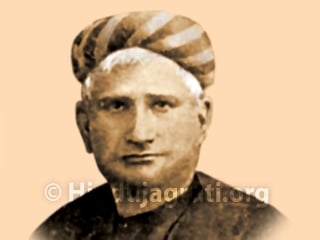 Bankim Chandra Chattopadhyay - The composer of National Song ‘Vande Mataram’
Bankim Chandra Chattopadhyay - The composer of National Song ‘Vande Mataram’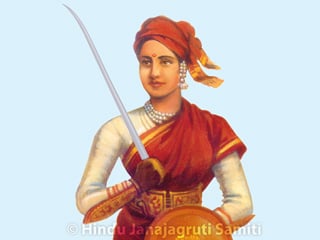 Jhansi ki Rani - Rani Lakshmi Bai
Jhansi ki Rani - Rani Lakshmi Bai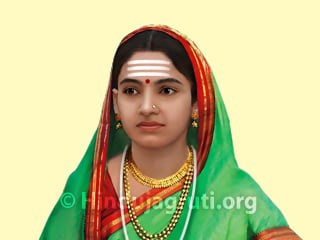 Kittur Rani Chennamma : Earliest ruler to fight British rule
Kittur Rani Chennamma : Earliest ruler to fight British rule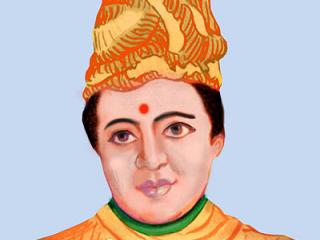 Rani Tapaswini: Combination of Brahmatej and Kshatratej
Rani Tapaswini: Combination of Brahmatej and Kshatratej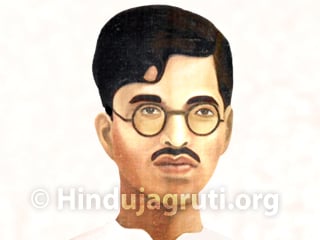 Martyr Annasaheb Kotwal
Martyr Annasaheb Kotwal